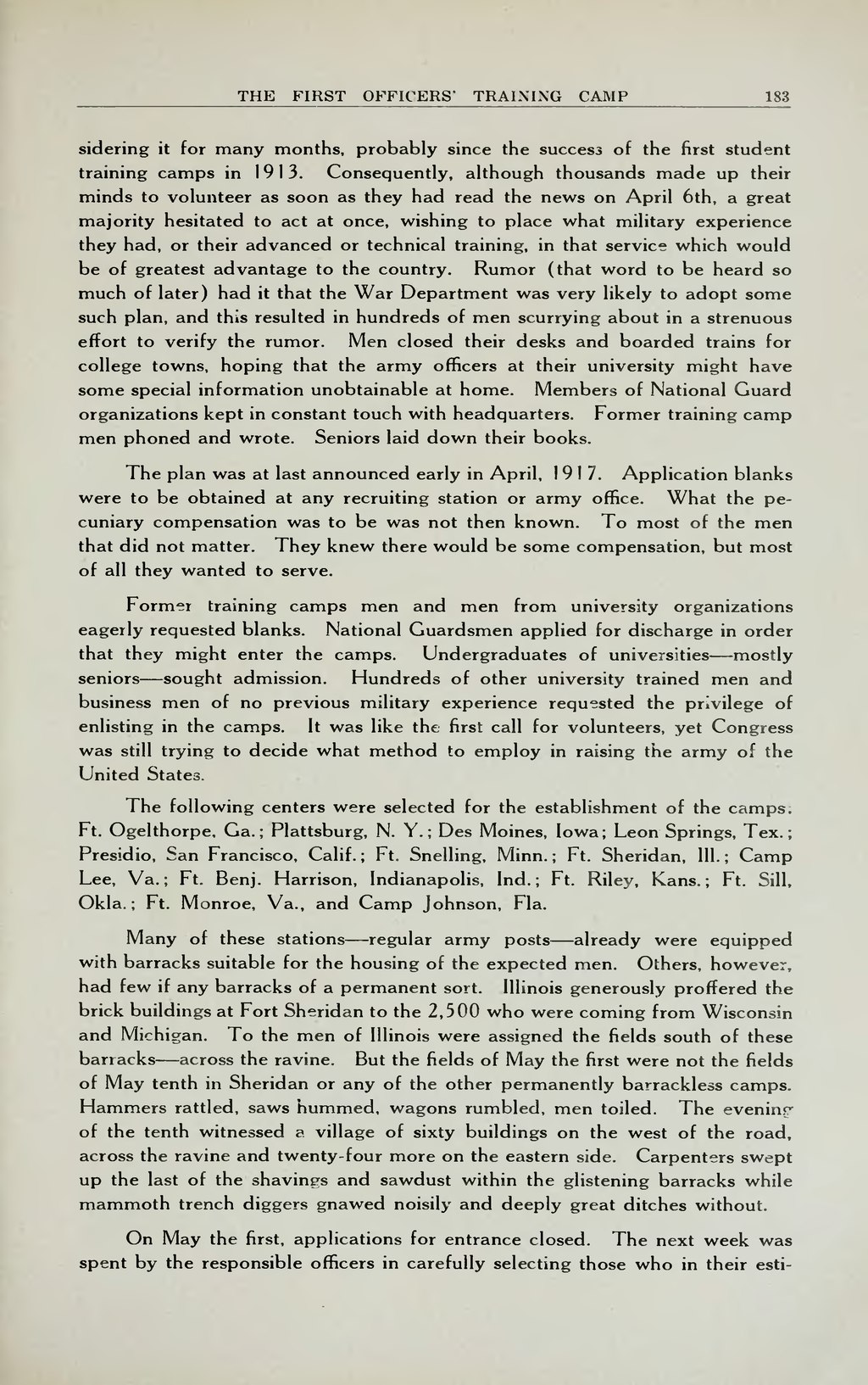sidering it for many months, probably since the success of the first student training camps in 1913. Consequently, although thousands made up their minds to volunteer as soon as they had read the news on April 6th, a great majority hesitated to act at once, wishing to place what military experience they had, or their advanced or technical training, in that service which would be of greatest advantage to the country. Rumor (that word to be heard so much of later) had it that the War Department was very likely to adopt some such plan, and this resulted in hundreds of men scurrying about in a strenuous effort to verify the rumor. Men closed their desks and boarded trains for college towns, hoping that the army officers at their university might have some special information unobtainable at home. Members of National Guard organizations kept in constant touch with headquarters. Former training camp men phoned and w^rote. Seniors laid dow^n their books.
The plan was at last announced early in April, 1917. Application blanks were to be obtained at any recruiting station or army office. What the pe- cuniary compensation was to be was not then known. To most of the men that did not matter. They knew^ there would be some compensation, but most of all they w^anted to serve.
Former training camps men and men from university organizations eagerly requested blanks. National Guardsmen applied for discharge in order that they might enter the camps. Undergraduates of universities — mostly seniors — sought admission. Hundreds of other university trained men and business men of no previous military experience requested the privilege of enlisting in the camps. It was like the first call for volunteers, yet Congress was still trying to decide what method to employ in raising the army of tfie United States.
The following centers were selected for the establishment of the camps; Ft. Ogelthorpe, Ga. ; Plattsburg, N. Y. ; Des Moines, Iowa; Leon Springs, Tex.; Presidio, San Francisco, Calif.; Ft. Snelling, Minn.; Ft. Sheridan, 111.; Camp Lee, Va. ; Ft. Benj. Harrison, Indianapolis, Ind. ; Ft. Riley, Kans. ; Ft. Sill, Okla. ; Ft. Monroe, Va., and Camp Johnson, Fla.
Many of these stations — regular army posts — already were equipped with barracks suitable for the housing of the expected men. Others, however, had few if any barracks of a permanent sort. Illinois generously proffered the brick buildings at Fort Sheridan to the 2,500 who were coming from Wisconsin and Michigan. To the men of Illinois were assigned the fields south of these barracks — across the ravine. But the fields of May the first were not the fields of May tenth in Sheridan or any of the other permanently barrackless camps. Hammers rattled, saws hummed, wagons rumbled, men toiled. The evening of the tenth witnessed a village of sixty buildings on the west of the road, across the ravine and twenty-four more on the eastern side. Carpenters swept up the last of the shavings and sawdust within the glistening barracks while mammoth trench diggers gnawed noisily and deeply great ditches without.
On May the first, applications for entrance closed. The next week was spent by the responsible officers in carefully selecting those who in their esti-
�� �
